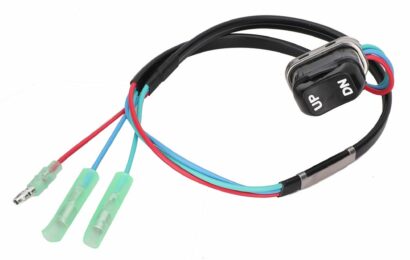Getting the right MerCruiser power steering fluid is essential for your boat’s control systems to perform properly. The MerCruiser power steering fluid also prevents wear-and-tear in boats’ power steering systems.
The MerCruiser power steering fluid is synthetic oil designed for use in boats’ control systems. It easily mixes into a boat’s control system, prevents friction, and encourages better sailing.
In this article, you’ll find out all the relevant details about MerCruiser power steering fluids. And if you’re keen on information on top alternatives, this guide has all the details you need.
What Power Steering Fluid Goes in a MerCruiser?
MerCruiser power steering fluid is the best option for use in MerCruiser engines. The oil can also suit steering systems on Mariner, Mercury, and other engines.
Apart from the MerCruiser power steering fluid, Mercury PSF 0W-30 (950ml) is another great choice for boats’ steering systems.
In most cases, you don’t need to drain fluid from your boat’s steering system before adding MerCruiser power steering fluid. The fluid is formulated to easily mix with existing fluid in its system without issues.
How to Check the Power Steering Fluid on a MerCruiser
Step 1: Locate power steering fluid cap and remove it
The power steering fluid cap on your MerCruiser engine is usually located close to your boat’s helm area. Refer to your vessel’s owner service manual if you can’t locate the power steering fluid cap on your boat.
Next, unscrew the power steering fluid cap to gain access to its tank.
Step 2: Wipe clean fluid on dipstick
Most power steering fluid caps come with dipstick to make inspections easy.
Get one clean, lint-free cloth on hand to wipe out fluid film covering the power steering fluid dipstick. Wiping the fluid off makes it easy to check the exact level of steering fluid and if more is required.
Step 3: Insert dipstick again
Next, insert the wiped dipstick into your boat’s power steering fluid compartment. Inserting a clean dipstick makes it easy to know if your boat’s steering fluid is enough or not.
Step 4: Remove dipstick
Many dipsticks have three markings on their surfaces – Low (Minimum) Medium (Average), and High (Maximum).
The dipstick should have oil above medium at all times to keep your boat’s steering in optimal shape. Using a steering system that lacks oil could cause metal clashing sounds and wear out your boat’s control mechanism.
Step 5: Wipe off debris
It’s recommended to wipe out spilled oil, debris, and other impurities from the surface of your steering fluid tank. Close the cap and ensure it seals properly to prevent fluid from spilling into your boat.
Best MerCruiser Power Steering Fluid Alternative
Apart from MerCruiser power steering fluid, other options are excellent alternatives for boat’s control systems.
The Genuine Honda Fluid 08206-9002 Power Steering Fluid offers high-performing support for auto/marine steering systems. It is usually available in 1-liter and 4-liter cans.
Also, the Prestone Power Steering Fluid is a choice option for several boaters, especially in the US. Most power steering fluids from Prestone are available as 1-liter bottles.
Royal Purple Max EZ Power Steering Fluid is another great alternative to power your boat’s steering systems. It comes in 1-liter and 2-liter variants and mixes seamless with existing fluid in boats’ control systems.
And the Acdelco Power Steering Fluid proves effective to promote smooth steering in many boating systems. It is usually available in 1-liter containers and proves effective like MerCruiser fluids.
Can You Use Automotive Power Steering Fluid in a Boat?
Automotive power steering fluid can work in a boat without problems. Experienced boaters can also use transmission and hydraulic fluid if a standard power steering fluid isn’t available.
There’s a consensus among boaters that transmission, hydraulic, and power steering fluids are suitable for use in boats’ steering systems.
How to Know If Your Power Steering Fluid is Low
Step 1: Access the steering fluid tank
The fluid tank should be within reach and might be positioned close to your steering system. Gain access to this tank by opening its screw cap.
Step 2: Clean off fluid on the tank’s dipstick
The screw cap should have a built-in dipstick. Wipe fluid from the dipstick with a piece of dry cloth. You can also make use of a piece of foam or light polythene film if you don’t have a towel nearby.
Inspect the fluid tank’s dipstick and you’ll notice three markings from low to high.
Step 3: Re-insert dipstick into fluid tank
After re-inserting the dipstick, check its level to see if it falls below the average level. Fluid levels below average means your boat’s power steering fluid is low and needs a top-up.
Step 4: Add fluid (if required)
If the fluid level is below average, it’s not good for your boat’s operation over time. Get recommended fluid to increase its level in your steering system and ease swerving during operation.
Note that you don’t have to drain out all the power steering fluid from its tank. If it’s not due for a change, top it up with a fresh volume of steering fluid instead.





